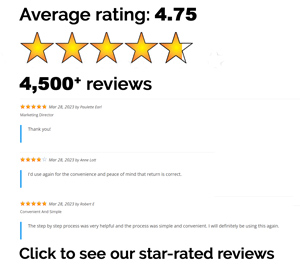For as long as we can remember, we learn a lot of things in school but financial literacy isn’t one of them! So why is it a lesson that must be taught? Because life has a funny way of making us figure things out on our own and hope we don’t mess up too badly. One subject many adults haven’t learned is taxes, so let’s teach you the basics.
What’s a W-4?
Even though Uncle Sam doesn’t show up to work with you, he still gets paid when you do. He takes his share in the form of taxes. To ensure the appropriate amount of tax is withheld from your pay, you must submit a form W-4 to your employer. The greater your deduction each pay period, the bigger the tax refund you’ll get when you file. The more you keep in your pocket each pay period, the more you’ll need to pay when you file. If done accurately, you’ll get a small tax refund when you file your tax return. It’s a good idea to adjust your withholding anytime you experience changes in your personal or financial life.
What’s a W-2?
Your W-2 tells you how much money you earned in the past year and the total amount of taxes that were withheld. Typically, your employer will issue a copy before the end of January. Once you have your W-2 handy, you’ll use the information to file your annual income tax return.
How to file your tax return
Form 1040 is what taxpayers use to file their annual income tax return. On this form, you’ll report your income, claim your credits and/or deductions and calculate your tax liability. There are a few ways you can prepare your return. You can either download the form and do it by hand, hire a tax professional or use tax software like ezTaxReturn.com! It all depends on your personal preference. Tax software is best for people who are trying to save a few bucks and want to get their taxes down fast and stress-free. With ezTaxReturn.com, you’ll answer simple questions and the proper forms will be completed for you. As long as you enter accurate information, you’ll get accurate results.
The difference between a tax credit and tax deduction
When you do your taxes, you want to owe as little money as possible, or get a small refund. The best way to reduce your tax bill is to take advantage of available credits and deductions. Tax credits reduce the amount of taxes you owe and can be refundable or nonrefundable. If the credit is nonrefundable, it can only lower your tax liability. Credits that are refundable can produce a refund once your tax burden is reduced to zero. The American Opportunity Tax Credit and Earned Income Tax Credit are two examples of refundable credits. Tax deductions work differently. They reduce your income before your tax bill is calculated. Educator expenses and student loan interest are two popular tax deductions.
The tax deadline
There are three important dates most adults need to remember: your partner’s birthday, your anniversary and Tax Day. Forget any of these and it will cost you a lot of money to make things right. This year, the last day to do your taxes without repercussion is April 18th. Taxpayers who need more time to do their taxes can request a filing extension using Form 4868. This will give you an additional six months to file. But…
Requesting an extension doesn’t give you more time to pay
Although the IRS allows you to file late, they’re not really doing you any favors. Requesting an extension only gives you more time to file, it does not give you more time to pay any taxes you may owe. Therefore, you’ll be racking up interest and penalties from April 18th onward. Even if you can’t afford to pay your whole tax bill, at least file on time and pay as much as you can.




